
The ENIGMA project seeks to discover, characterize the reciprocal interactions between the microbial communities and the geochemical and geophysical parameters of the shallow subsurface within the contamination plume of groundwater and sediment microbiomes in the shallow subsurface at the contaminated Oak Ridge Reservation (ORR). Our ambition is to do so at sufficient resolution to causally predict the active biotic and abiotic mechanisms mediating key processes such as denitrification; dissect the dispersing and persistent microbial community components critical in space and time during these processes, and ultimately predict the future changes in contaminant fate from current observations and possibly arising from natural and anthropogenic perturbations. Outcomes are significant both in the basic science of community ecology and in gaining an applied understanding of biologically-mediated subsurface processes in contaminated sediments. The ORR contains highly contaminated DOE legacy regions and excellent field infrastructure available for research instrumentation and 30+ years of biogeochemical data collected by other scientists. It has well-mapped hydrology and geology and complex gradients of nutrients, stressors, and contaminants, making the ORR an excellent site to study the reciprocal interactions of environmental factors on microbial ecology and activity. Across the site, a large number of active wells permit efficient groundwater sampling, and it is relatively cost-effective to drill new wells or retrieve depth-indexed sediment cores when the project requires it.
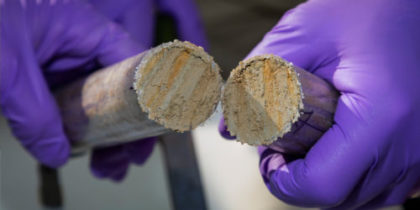
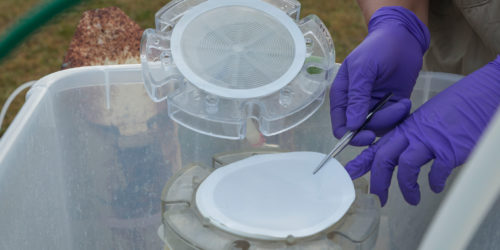
A Systems Approach to Microbial Ecology
Terry Hazen, current Subsurface Observatory Science Lead, oversaw the installation of the Subsurface Observatory system at the highly-contaminated Y-12 National Security Complex. The suite of instruments is comprised of a grid of nine wells near the sites’ historical Waste Disposal Ponds (now a capped parking lot). Each well has at least four subwells with sensors that allow researchers to consistently monitor the temperature, oxygen and nitrate concentration, acidity, and more. The researchers also pull water samples from the wells, evaluating total microbial biomass as well as the species—and even genes—that are most common at each depth.
Relevant Publications
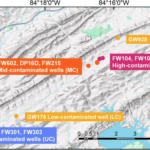 Functional Resilience in Microbes found in Groundwater - ENIGMA researchers studied microbes living in groundwater at a site contaminated with metal, acid, and other waste. They compared wells with high, medium, low, and no levels of contamination. They found that even when microbial species count decreased under stress, groups of microbes compensated to sustain essential functions. Relevant Publication →
Functional Resilience in Microbes found in Groundwater - ENIGMA researchers studied microbes living in groundwater at a site contaminated with metal, acid, and other waste. They compared wells with high, medium, low, and no levels of contamination. They found that even when microbial species count decreased under stress, groups of microbes compensated to sustain essential functions. Relevant Publication →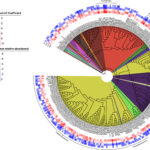 Adding Nutrients to Groundwater Yields Reproducible Response in Nearby Microbial Communities - Emulsified vegetable oil injections into groundwater promoted reproducible geochemical and microbial changes across an eight-year time gap. Relevant Publication →
Adding Nutrients to Groundwater Yields Reproducible Response in Nearby Microbial Communities - Emulsified vegetable oil injections into groundwater promoted reproducible geochemical and microbial changes across an eight-year time gap. Relevant Publication →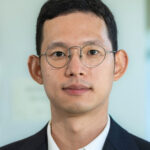 Jinwoo Im is ENIGMA’s Third BioEPIC Virtual Research Slam Presenter - With anticipated occupancy early 2025, Berkeley Lab’s newest building Biological and Environmental Program Integration Center (BioEPIC), is located in the beautiful Berkeley hills overlooking San Francisco Bay and the Golden Gate Bridge. As part of Berkeley Lab’s Earth Month celebrations, a Research SLAM was hosted by Biosciences (BSA) / Earth and Environmental Sciences Areas (EESA) to raise awareness of the… Relevant Publication →
Jinwoo Im is ENIGMA’s Third BioEPIC Virtual Research Slam Presenter - With anticipated occupancy early 2025, Berkeley Lab’s newest building Biological and Environmental Program Integration Center (BioEPIC), is located in the beautiful Berkeley hills overlooking San Francisco Bay and the Golden Gate Bridge. As part of Berkeley Lab’s Earth Month celebrations, a Research SLAM was hosted by Biosciences (BSA) / Earth and Environmental Sciences Areas (EESA) to raise awareness of the… Relevant Publication → ENIGMA, Hazen Highlighted in University of Tennessee Feature - Terry Hazen, now the ENIGMA Subsurface Observatory Science Lead, discusses his journey with ENIGMA and current research interests. Relevant Publication →
ENIGMA, Hazen Highlighted in University of Tennessee Feature - Terry Hazen, now the ENIGMA Subsurface Observatory Science Lead, discusses his journey with ENIGMA and current research interests. Relevant Publication → Multi-disciplinary research develops a deeper understanding of subsurface microbiology - ENIGMA is organized into three aims that reflect the different research scales (i.e., field level to molecular level) required to build a comprehensive picture of subsurface microbiology at the Oak Ridge Reservation (ORR): Subsurface Observatory, Environmental Atlas, and Environmental Simulations. Several key research initiatives, described in this cross-aim overview, highlight this framework in action. Relevant Publication →
Multi-disciplinary research develops a deeper understanding of subsurface microbiology - ENIGMA is organized into three aims that reflect the different research scales (i.e., field level to molecular level) required to build a comprehensive picture of subsurface microbiology at the Oak Ridge Reservation (ORR): Subsurface Observatory, Environmental Atlas, and Environmental Simulations. Several key research initiatives, described in this cross-aim overview, highlight this framework in action. Relevant Publication → Nuclear Waste Sites Yield Microbial Ecosystem Insights - In a flagship seven-year study, published this January in the journal Nature Microbiology, ENIGMA researchers explored how environmental stresses influence the composition and structure of microbial communities in the groundwater of the Oak Ridge Reservation (ORR), a former nuclear waste disposal site. Relevant Publication →
Nuclear Waste Sites Yield Microbial Ecosystem Insights - In a flagship seven-year study, published this January in the journal Nature Microbiology, ENIGMA researchers explored how environmental stresses influence the composition and structure of microbial communities in the groundwater of the Oak Ridge Reservation (ORR), a former nuclear waste disposal site. Relevant Publication →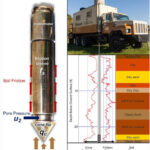 Rainfall Impacts Hydrology Of Test Site More Than Field Sampling - ENIGMA researchers measured physical and geochemical effects of cone penetrometer testing on nearby shallow groundwater wells. They found that the effects of cone penetration on water level and conductivity were minimal. Relevant Publication →
Rainfall Impacts Hydrology Of Test Site More Than Field Sampling - ENIGMA researchers measured physical and geochemical effects of cone penetrometer testing on nearby shallow groundwater wells. They found that the effects of cone penetration on water level and conductivity were minimal. Relevant Publication →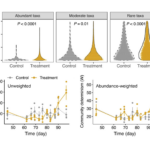 New Platform Explores Ecological Drivers of Change in Microbial Communities - ENIGMA researchers assess mechanisms for microbial taxa and community dynamics using process models. Relevant Publication →
New Platform Explores Ecological Drivers of Change in Microbial Communities - ENIGMA researchers assess mechanisms for microbial taxa and community dynamics using process models. Relevant Publication →